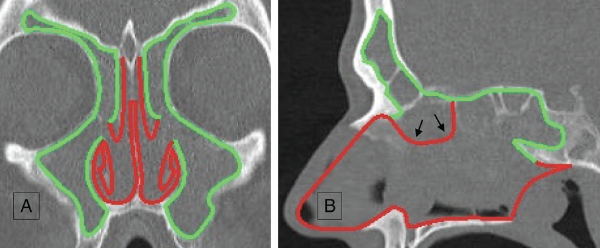Concurrent septoplasty and younger age were associated with increased opioid usage, although the majority of FESS patients did not take more than five opioid tablets after surgery.

Reboot Approach Significantly Reduces Post-Op Nasal Polyp Recurrence
The reboot approach significantly reduced nasal polyp recurrence for 30 months postoperatively compared to the current mucosa-sparing approach.
Hierarchical Task Analysis Can Help Reduce Error in FESS
HTA and the Systematic Human Error Reduction and Prediction Approach (SHERPA) are valuable tools to highlight potential errors in functional endoscopic sinus surgery (FESS).
Sinus Surgery Improves Olfaction for About Half of Patients with CRS
Olfaction can be improved by sinus surgery in about every second chronic rhinosinusitis (CRS) patient.
Tranexamic Acid Could Decrease Operative Time, Intraoperative Blood Loss in ESS
A look at how effective systemic tranexamic acid is compared to a control in blood loss, operative time, and surgical field and incidence of postoperative emesis and thromboembolism in endoscopic sinus surgery (ESS).
Tissue Eosinophil Aggregates May Drive Increased Post-Sinus Surgery Prednisone Requirements
Tissue eosinophil aggregates appear to be the largest driving factor for increased prednisone requirements after sinus surgery to control mucosal disease than the mere presence of eosinophils.
Septal Deformity Grading Helps Nasal Airway Obstruction Diagnosis
The septal deformity grading (SDG) system may be valuable when used in conjunction with subjective data gathered from the Nasal Obstruction Symptom Evaluation (NOSE) questionnaire.
Chronic Rhinosinusitis Symptom Duration Does Not Affect ESS Outcomes
Patients with long-term symptom duration reported the greatest mean postoperative quality of life improvement.
INCS Use for Rhinitis Not Associated with Cataracts, Intraocular Pressure
Presence of glaucoma the real clinical adverse event of concern when using intranasal corticosteroids for adult patients with rhinitis.
Tasks Required for a Correct Training Approach to FESS
Ten tasks and 49 subtasks offer the opportunity to improve surgical training and enhance patient safety by identifying high-risk steps in functional endoscopic sinus surgery, and how risk can be mitigated.
- « Previous Page
- 1
- …
- 6
- 7
- 8
- 9
- 10
- …
- 17
- Next Page »